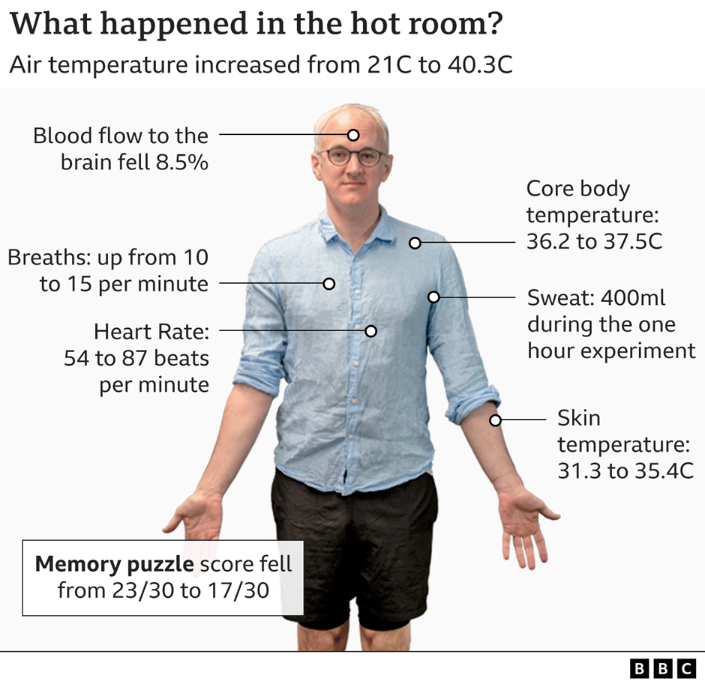Although there isn’t much evidence of a heatwave in mainland UK right now, it’s well publicised that most of the southern continent is baking in extreme temperatures sparking wildfires and heat emergencies. Many resorts in Italy have reached over 40 degrees, with many Brits knowing the feeling – with an unprecedented 40.3c hottest day on record reached in summer 2022. You may know about sunburn and heat stroke – but how much do you know about how extreme heat changes your physiology and the sort of upkeep you need to prevent heat related illness?
EU statisticians have found that 60,000 people died in Europe last summer due to heat related illness, a damning demonstration of how extreme heat causes our physiology to falter. An article, first reported in the Guardian, states, “Public health experts took that data and used epidemiological models to work out how many deaths could be traced back to the temperature. They found 61,672 people died of heat-related causes in Europe between 30 May and 4 September 2022. The mortality rate was highest in Italy, Greece, Spain and Portugal”. To be clear, the majority of people who die from heat related illnesses often have comorbidities such as heart failure or high blood pressure and the extreme temperatures push their physiology into a maladaptive state.
It’s worth noting, though, that extreme heat is also increasing across the world alongside the global health crisis of mostly sedentary conditions such as cardiovascular disease, diabetes, obesity and cancer. So, as these comorbidities increase, we can also expect to see them exacerbated by climate change. From the WHO, “Even small differences from seasonal average temperatures are associated with increased illness and death. Temperature extremes can also worsen chronic conditions, including cardiovascular, respiratory, and cerebrovascular disease and diabetes-related conditions”. However, a recent report by the BBC sought to investigate simulated temperature experiments to demonstrate the differences in physiology at different temperature intervals.
James Gallagher, presenter at the BBC, recently took part in an experimental demonstration of the extreme physiology created by rising temperatures. Prof Damian Bailey of the University of South Wales set Gallagher in a heat chamber at 3 different temperature intervals - 21C, 35C, then finally up to 40.3C - equivalent to the UK's hottest day. Gallagher writes, “I'm connected to a dizzying array of gizmos tracking the temperature of my skin and my internal organs, my heart rate and blood pressure. A huge mouthpiece analyses the air I exhale and an ultrasound inspects the flow of blood to my brain through the carotid arteries in my neck. We have one quick brain test to complete - memorising a list of 30 words - and then the fans kick in. The temperature is starting to rise”.
The hypothalamus, the heat and temperature controlling part of the brain, keeps the body at and around 36-37 degrees centigrade. When extreme heat and heatstroke strike, this can raise up to 38-39 centigrade. Anyone who experiences 41-42 centigrade without medical treatment will likely die and succumb to hyperthermia as enzymes are damaged and key processes cannot happen, causing the organs to fail. The feeling after the test was very different, “When I chuck my sweaty clothes on the floor, towel off and climb back on the scales I'm shocked to learn I've lost more than a third of a litre's worth of water during the course of the experiment. The cost of opening up all those blood vessels near my skin to lose heat is also clear. My heart rate has increased significantly and at 40C it is pumping an extra litre of blood per minute around my body than it was at 21C”.

The results of the experiment are stark. And this is exactly what causes deaths in the elderly and those with comorbidities. As heat increases, the hypothalamus causes vasodilation – the dilation of blood vessels – to increase as much blood to the skin as possible, causing flushing – aimed at reducing the heat retained by the body by radiation into the air around it. Sweating increases at the cost of all else, including reducing blood flow to the brain. Vasoconstriction to main organs occurs, meaning the body is focused solely on maintaining vital processes and things like digestion and fluid processing reduce, even causing urinary retention and disrupted digestion and diarrhoea. This is exactly why record numbers of Europeans have died recently from heat related illnesses, and the number is only expected to go up. Researchers from the University of Berne illustrate this, “We found 60% of the observed deaths can be attributed to climate change. More than 2,000 senior women in Switzerland have taken the federal government to the European court of human rights for failing to do enough to stop global warming – citing the risk to their own health from heatwaves. The Swiss government has argued the link between its actions and their suffering was too tenuous and remote”.
One thing is for sure, if the current processes and practices continue to influence the climate, these effects are something we are sure to keep seeing in the future.
